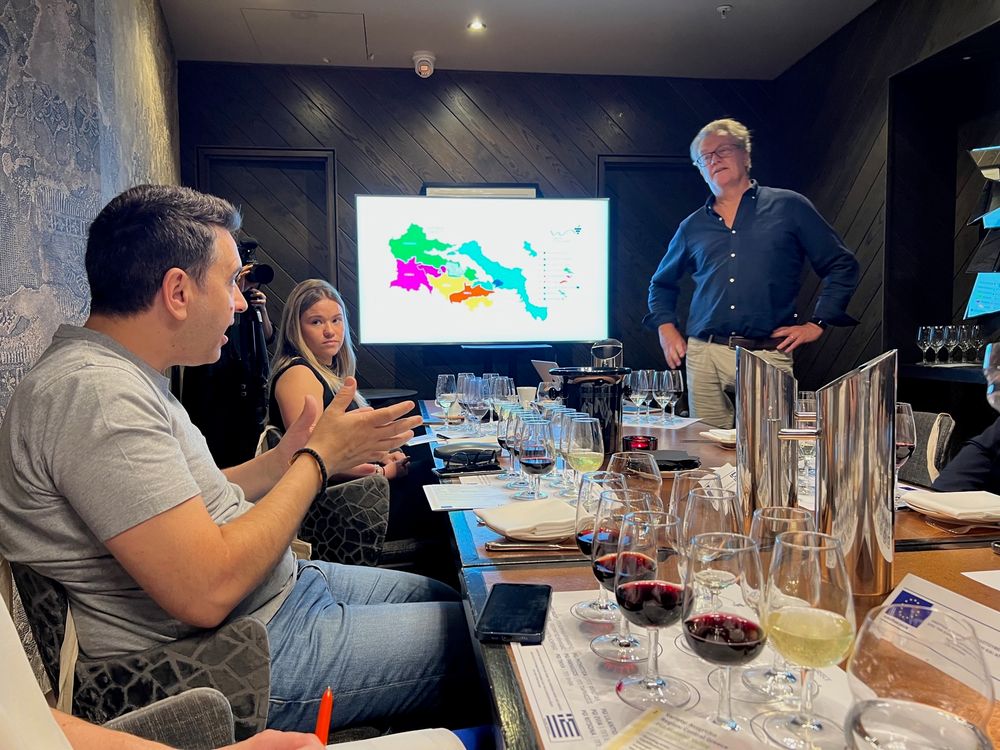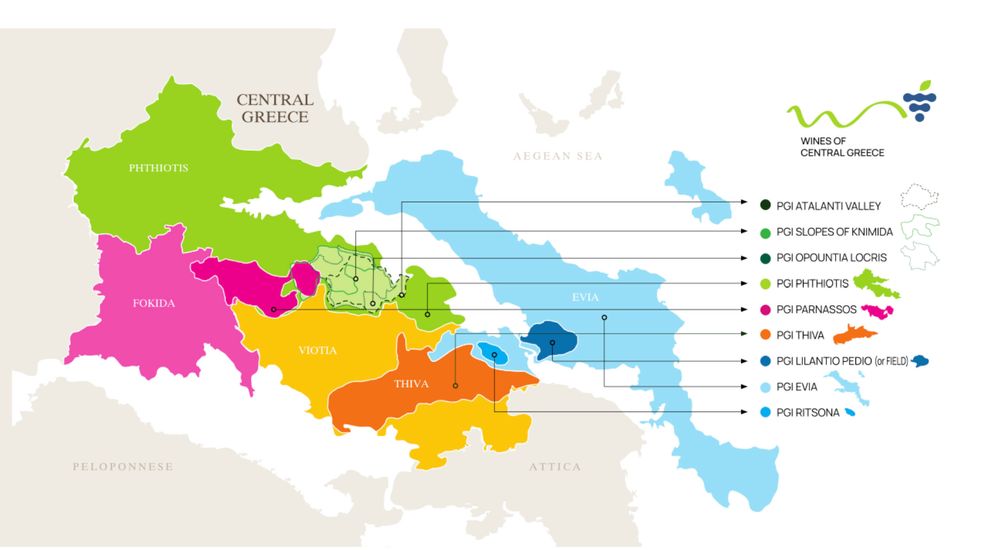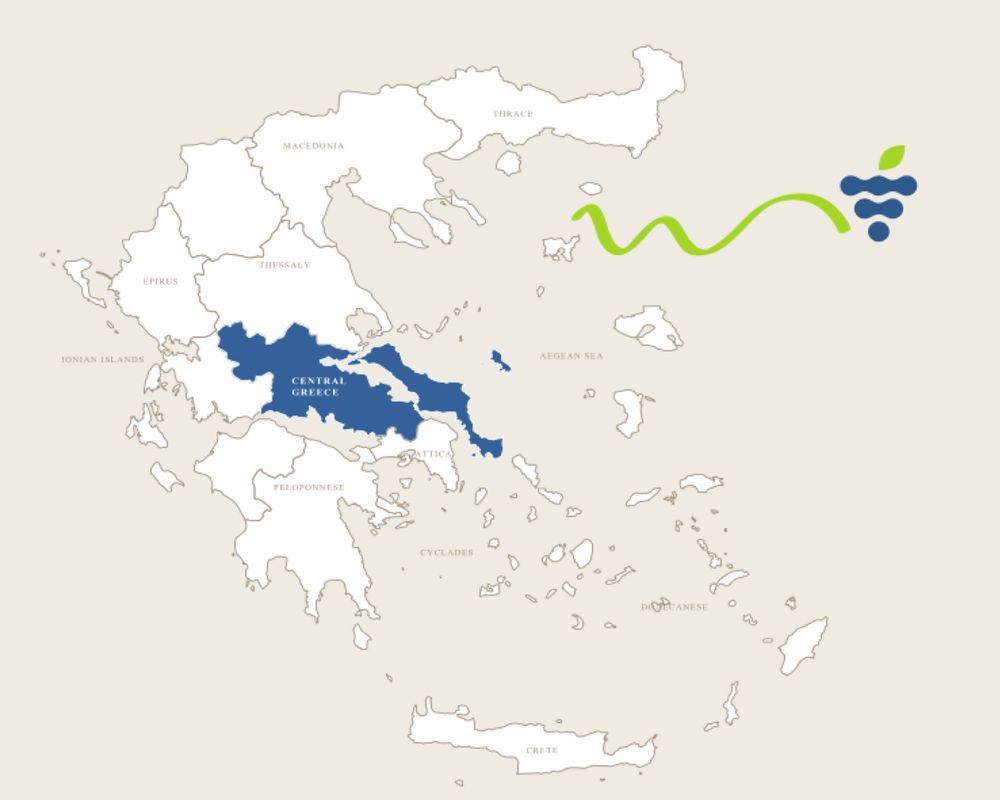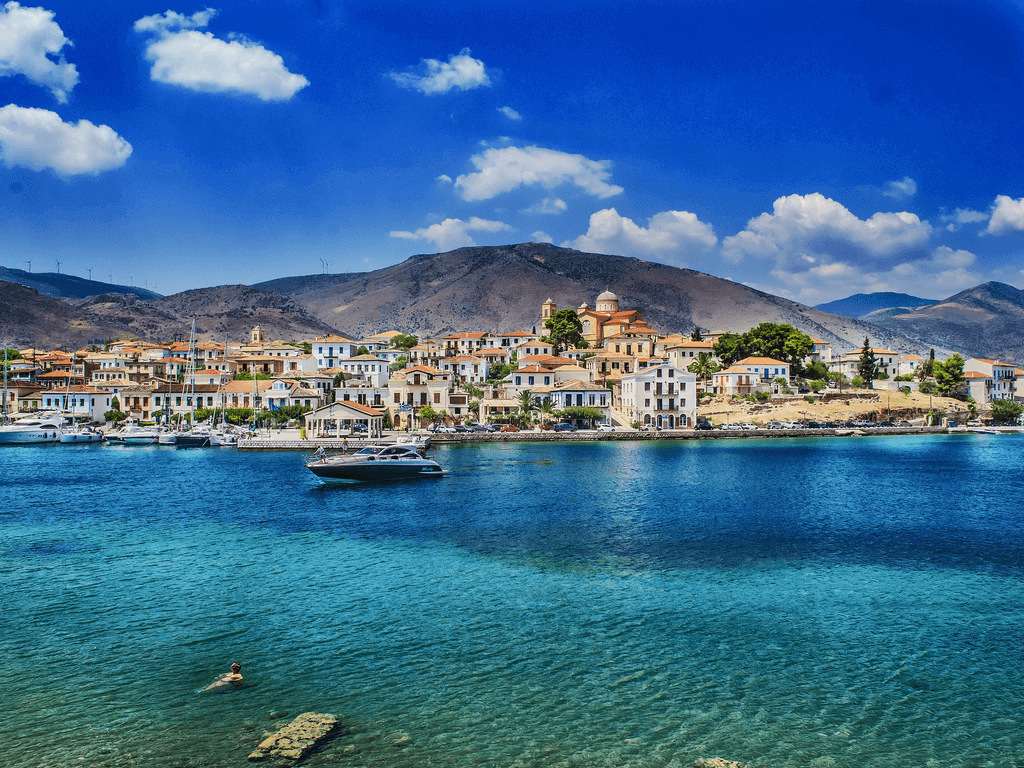A fascinating insight into the indigenous varietals of central Greece was too good an opportunity to miss for Victoria Sharples and a group of fellow sommeliers and restaurateurs.
The masterclass’ principal objective was to raise awareness of varietals and the PGIs of Central Greece rather than specific winemakers and their stories. It provided a compelling experience allowing us to simply focus on styles and contemplate how, if and where these wines might fit in the UK market and on a wine list.
It is fair to say that up until recently most of the Greek wines we see in the UK, are more likely to be from the islands rather than mainland Greece – with Santorini finding a niche and the Assyrtiko grape gracing wine lists with increasing frequency.
Happily the indigenous grapes that we tasted, with their breadth of styles and good quality, definitely have a place on UK wine lists. Some will make excellent pairing wines, others a brave alternative and others more of a ‘hand-sell’. While it is less likely that the nine PGIs of central Greece will become common parlance, some of the grapes could well do particularly as many of these grapes are drought-resistant prompting opportunities for other regions to consider these grapes.

The masterclass was a chance to taste different indigenous varietals from Central Greece
A third of all of Greece’s population lives on the eastern coast of Central Greece, and the area has diverse soils from rich to poor and has some of the highest mountains. It lies immediately north of Attica (the driest and hottest of the wine regions in Greece) and Athens.Microclimates, sea and mountain influences all provide additional interest to the wines that are grown here. Stylistically the wines are modern with some varietals offering opportunities for extended skin contact, low and no sulphur along with more traditional wine making, concrete, oak, lees etc. As a region, the wines tasted show great potential to offer something different to drinkers (and sommeliers) without being too difficult to understand or pronounce forthe UK market.Each of the whites and reds tasted showed personality, and in some cases similarities to other varietals (which can definitely help introduce a wine giving it a hook for the drinker and sommelier alike).
Different styles
Starting with the most familiar of the grapes – Assyrtiko – a grape more widely planted and mainland offering a more fruit driven, less mineral style that those of Santorini, a little broader with immediate appeal. These could offer an opportunity to list a second (or third) assyrtiko especially if it provides a more compelling offer price wise.
Savatiano (PGI Evia) is a grape we will see more and more; widely planted and with high yields, look out for those grown in higher altitudes and lower yields – these show a fresh, zesty style with good length and immediately appealing to a Sauvignon Blanc drinker. Having a lower acidity than assytiko this offers a wine that has an ability to be very versatile and particular suitable when combined with a variety of food styles.
Malagouzia is a grape that can grow nearly anywhere and was almost extinct 60 years ago, it is a grape that suits extended skin contact. The wine we tasted is broad on the palate, subtle and understated with elegant pepper and spice – and a subtle chopped basil note (a great clue in a blind tasting). This was very popular amongst the sommeliers – who felt it would be excellent as an aperitif. Definitely accessible, with immediate and broad appeal. Think white Rhône blend or possibly a white Rioja.
Probably the most distinctive and a definite ‘food wine’, wonderful for matching, was the Moschofilero (PGI Evia). An aromatic, delicate varietal which can struggle to ripen. Definitely trickier for the market, this will need hand-selling; suited food matching and degustation menus to arouse the senses. Round and rich with a phenolic, structured palate, yet despite its aromatic nature this is far milder and more muted than the floral, muscaty notes one might expect.

Elvis Ziakos head sommelier at Mark’s Club Birley Group talks through the varieties of Central Greece with Peter McCombie MW who hosted the session
Vradiano (PGI Evia) is a variety that has, in my opinion, a more rustic style and while the alcohol was high sitting at 15% it didn’t show; no doubt aided by the 400m growing altitude. Savoury and spicy with ripe, dark fruits and drying tannins. The nose was lighter than the palate and the chewy tannins give a style that would welcome black olives, charcuterie and rustic dishes. Moreish and an interesting wine for mid-week drinking – think an alternative to a GSM/Rhone.
A more familiar grape – Xinomavro – from the PGI Opountia Loris provided a particularly expressive and memorable wine. Hints of balsamic, tar and ripe dark fruit were lifted taking it into a different dimension to notes redolent of Nebbiolo. Fine drying tannins, heady without being overpowering, good acidity and plenty of spice. Definitely showing its as an ‘aristocratic grape’ with potential to age well.

Mouchtaro (PGI Thiva) is a rare, indigenous varietal that grows on bush vines. Ripe and supple on the palate, yet its acidity and spice provides an interesting alternative for New World Pinot Noir drinkers and more muscular Cru Beaujolais (Morgon) fans.In contrast to this rare grape, the final wine made from Mavrokountoura (PGI Evia) which is widely planted and often used in blending for its colour, natural acidity and tannins. On its own the wine has definite merit – it has a deep hue, brambles and blueberry without being overripe.Blackfruits, zesty and fine-grain tannins. In spite of its oak, a wine that could be chilled.
Overall each of these indigenous varietals could find a place on wine lists here – the wines we tasted are well made and expressive – all carrying their own story from a lesser known region with both history and terroir.The growing demand for something new is not abating and Central Greece is an area worth pursuing.

Central Greece has a great opportunity in the premium on-trade says Victoria Sharples










































